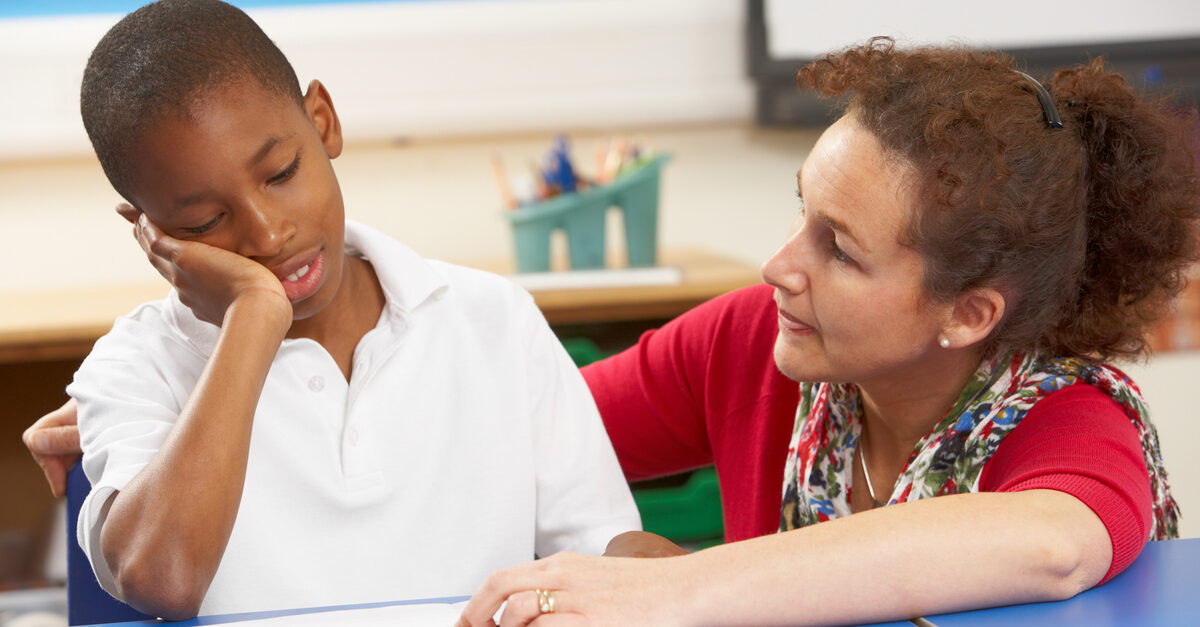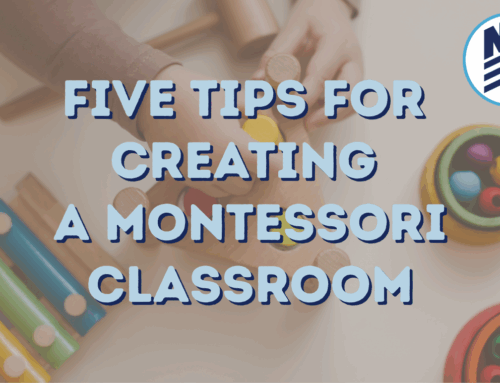
As we discussed previously, looping is a teaching strategy where a teacher stays with the same class across multiple grades. That article focused on the benefits that looping has. Which might have left you wondering “what are the issues with looping? Does it even have any drawbacks?” Well, wonder no more because today we’ll take a look at the drawbacks of a looped classroom.
Relationships
As highlighted in part one of this series, the deep relationships that often form between students and teachers is the biggest advantage to Looping. It follows, then, that when these relationships sour, they become the biggest disadvantage of looping.
The University of Minnesota highlights some key concerns in their article on looping. “The top three concerns parents have are personality conflicts, dysfunctional class, and being ‘stuck with a bad teacher.’” To put it plainly, while many parents love looping, some worry about possible toxic interactions in the classroom.
Student-Teacher Relationships
The most influential relationship in a classroom is the one between the student and teacher. Problems with these relationships can come from either teachers or students. Like how a worker may dislike a particular boss and a boss may have a worker they are not fond of, some teachers may not like a particular student. Likewise, some students will be unable to get along with a particular teacher.
Teachthought.com notes that “While maintaining an ongoing relationship with a respected teacher can really benefit students, being forced to continue classes where more of a negative relationship is present can really be detrimental to student advancement.” We can imagine students choosing not to apply themselves to their learning, disrupting class, or even skipping school all together to get back at or avoid a teacher they dislike.
On the other side of things the American Psychological Association, or APA, notes that “Teachers who have negative relationships with a student show evidence of frustration, irritability and anger toward that student.”
The APA also observes that “In these types of classrooms, teachers may find themselves resorting to yelling and harsh punitive control. Teacher-student communications may appear sarcastic or disrespectful. Student victimization or bullying may be common occurrences in such negative classrooms.” Obviously, such an atmosphere is not good for learning.
Beyond being damaging for the students of a classroom, stress also hurts job satisfaction, which is a major factor in worker retention. Negative relationships can cause teachers to leave their jobs.
Of course, all these issues can occur within non-looped classrooms. But by looping’s nature, what could be a sometimes-annoying student or irritating teacher can turn into a major issue when compounded over time.
Further, a teacher may look at a student as difficult and may treat them as such even if they change. As teachthought.com suggests “If a student has always been difficult in previous years, then it can be hard for you to notice they’ve changed and to react accordingly. Having to form new relationships, with new teachers, can sometimes give students that chance that they need to start over and build a new reputation.” For students with emotional issues or who have had a bad year, looping could cause these things to haunt them beyond what they would see in a traditional classroom.
Student-Student Relationships
While the teacher is usually the focus in discussions on looping, the entire classroom loops together. This means that students who are being bullied or are otherwise having issues with fellow students in their class lose the possibility of ending up in a different class. As Michelle Pecanic, an education graduate student, states, “It is also possible that students who are teased and disliked by peers may find themselves in an extremely negative situation during the second year if the teacher has not found a way to eliminate this problem.”
No one wants to be the target of bullies, and having to go back to a classroom with known bullies causes anxiety for the victim and could lead to escalation of the bullying over time.
Parent-Teacher Relationships
Though they are the least involved in the day-to-day action of a classroom, parents are also affected by the continuity of looping. Parents are an inseparable part of a child’s learning life. They work closely with teachers throughout a school year. Thus, if a parent finds themselves at odds with a teacher, the tension between them can increase stress.
Additionally, an unprofessional teacher may take out their anger with a parent on that parent’s child, which can create the negative student-teacher relationships we talked about earlier.
Other Problems for Teachers
Relationships are the best and worst parts of the looping strategy, but they are not the only things at play. Teachers in a looped classroom must teach multiple grade levels to travel with their students as they age.
Teachthought.com has this to say about teachers teaching multiple grades: “We all tend to be best when we are doing what we are really skilled at, and having a teacher switching grades each year can mean that they pass through the phase where they excel, then spend years teaching where they are less comfortable.” Likewise, the University of Michigan had this to add, “Looping will not be effective, and can be detrimental if the student is assigned to an ineffective teacher for two or three years in a row.” Placing teachers in areas where they are not comfortable makes for worse instruction and increased stress.
Moreover, Tracy Childers, a teacher and a writer for hmhco.com, points out, “Looping requires the teacher to be reflective on students’ every success and failure, which isn’t necessarily a negative thing. However, it is more time-consuming in the sense that the successful lesson you used during one school year likely cannot just be used again the following year if you are teaching a different grade.”
Therefore, any teacher in a looped classroom has to develop a larger range of games, activities, and ways of teaching than their non-looping counterparts.
Other Problems for Students
Every person learns in their own way. Likewise, every teacher teaches in their own way. TeachThought points this out. “In any school, just walk between different classes and observe them each in turn. We all teach differently. We may be covering the same programs, but delivery varies greatly from one teacher to the next!” Most of us have probably heard of the different learning styles by now. It stands to reason that our favored style will bleed into the way we teach as well.
A great teacher may do their best to use each type of learning in their classroom but are likely to do worse at teaching in a style they don’t favor. This makes for a boring and more difficult learning experience for a student who does not have one of their teachers’ learning styles.
Additionally, looping puts students in a classroom with the same people and prevents them from meeting new people and having new experiences. One teacher quoted by edweek.com points this out. “In general, I feel it is important to give students different experiences each year. It helps us as people to learn to adapt to new situations, expand our learning styles, and develop new relationships (both with adults and peers).”
Students need these new experiences with varied people in order to grow as individuals. One place they can gain these experiences is in the classroom. Therefore, looping can limit interpersonal skill growth if there are not extracurriculars to facilitate these skills.
Mobile Students
Looping as a strategy requires students to go through multiple years of school with the same teacher. As Michelle Pecanic suggests, “Looping may not be beneficial for highly mobile student populations since students do not remain in one location long enough to reap the benefits of being in a looping classroom.”
Later, she adds, “New students, or students who move away at the end of the first year, could also be negatively affected if the curriculum in the looping class is viewed as a two-year approach.” One student population that would fall prey to this fault in the looping system would be the children of soldiers. Military children move around often as their parents deploy or transfer.
Incoming Students
In a similar vein, students coming into a classroom after its first year of looping will likely struggle even worse than those that leave early as they are attempting to break into an already established group of youth. Michelle Pencanic explains that this is “because the new students will not know the classroom routines nor will they share the same prior knowledge and experiences with the rest of the class.” In other words, looped classrooms only work on students who go through more than one cycle of looping with the same teacher.
Conclusion
Looping has many benefits for students and their teachers, yet under certain circumstances benefits can be lost. Or, looping can even become detrimental to the students it’s meant to help.
The good news is that there are strategies to avoid some of these problematic situations. Having more than one teacher teaching at every grade level can give students and parents a way to leave a classroom they don’t like. Providing top notch training for teachers and extra time during the year for planning lessons and thinking of ways to help their students can lessen stress for teachers and ensure that every student gets a quality program.
Even with these fixes looping may still be far from perfect, especially for mobile students.
Classrooms using the looping strategy can help students to achieve new heights in their education. The impacts of the relationships that can be forged between teacher and student within a looping classroom are powerful. Looping can give teachers time to see where a student needs help and give them the opportunity to be a person with which students are comfortable. Students in looping classrooms usually see marked improvement in grades, teachers are often happier, and everyone, even the parents, are usually more acquainted with each other and can more easily navigate the frictions of the day-to-day.
Looping is a great strategy, but it is just that, a strategy. And as with all strategies there are times when it should be employed and when it shouldn’t. To put it plainly, you must think about all of the factors that make your student, school, or classroom unique before deciding if looping is right for you, your school, or your child.




